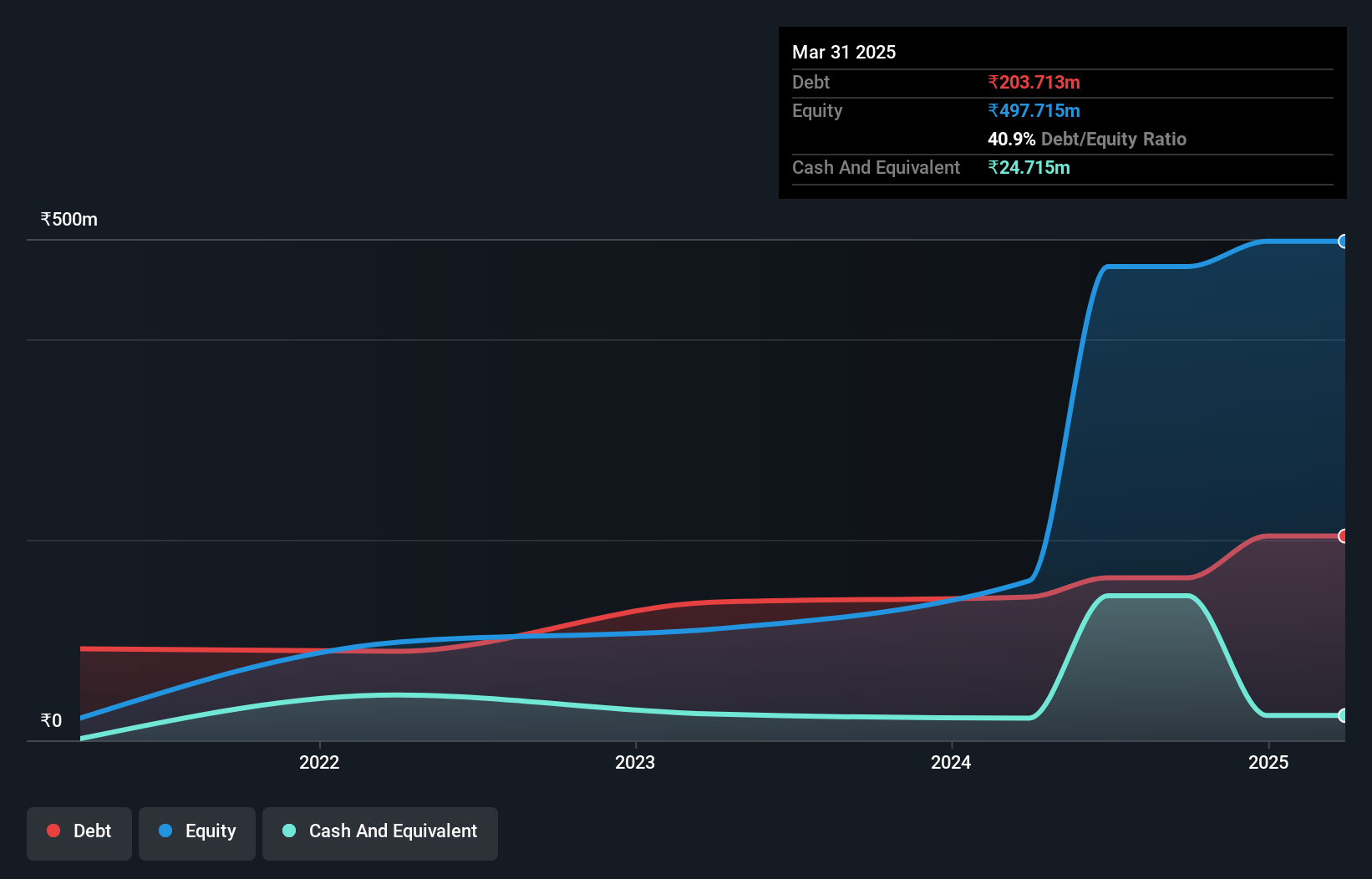- India
- /
- Aerospace & Defense
- /
- NSEI:TECHERA
TechEra Engineering (India) (NSE:TECHERA) Takes On Some Risk With Its Use Of Debt

Howard Marks put it nicely when he said that, rather than worrying about share price volatility, 'The possibility of permanent loss is the risk I worry about... and every practical investor I know worries about.' So it seems the smart money knows that debt - which is usually involved in bankruptcies - is a very important factor, when you assess how risky a company is. We can see that TechEra Engineering (India) Limited (NSE:TECHERA) does use debt in its business. But the more important question is: how much risk is that debt creating?
When Is Debt A Problem?
Debt assists a business until the business has trouble paying it off, either with new capital or with free cash flow. Ultimately, if the company can't fulfill its legal obligations to repay debt, shareholders could walk away with nothing. While that is not too common, we often do see indebted companies permanently diluting shareholders because lenders force them to raise capital at a distressed price. Of course, the upside of debt is that it often represents cheap capital, especially when it replaces dilution in a company with the ability to reinvest at high rates of return. When we examine debt levels, we first consider both cash and debt levels, together.
How Much Debt Does TechEra Engineering (India) Carry?
You can click the graphic below for the historical numbers, but it shows that as of March 2025 TechEra Engineering (India) had ₹203.7m of debt, an increase on ₹143.0m, over one year. On the flip side, it has ₹24.7m in cash leading to net debt of about ₹179.0m.

How Strong Is TechEra Engineering (India)'s Balance Sheet?
Zooming in on the latest balance sheet data, we can see that TechEra Engineering (India) had liabilities of ₹191.2m due within 12 months and liabilities of ₹122.0m due beyond that. Offsetting these obligations, it had cash of ₹24.7m as well as receivables valued at ₹201.7m due within 12 months. So its liabilities total ₹86.8m more than the combination of its cash and short-term receivables.
Of course, TechEra Engineering (India) has a market capitalization of ₹3.49b, so these liabilities are probably manageable. However, we do think it is worth keeping an eye on its balance sheet strength, as it may change over time.
View our latest analysis for TechEra Engineering (India)
We use two main ratios to inform us about debt levels relative to earnings. The first is net debt divided by earnings before interest, tax, depreciation, and amortization (EBITDA), while the second is how many times its earnings before interest and tax (EBIT) covers its interest expense (or its interest cover, for short). Thus we consider debt relative to earnings both with and without depreciation and amortization expenses.
TechEra Engineering (India) has net debt worth 2.1 times EBITDA, which isn't too much, but its interest cover looks a bit on the low side, with EBIT at only 3.2 times the interest expense. While these numbers do not alarm us, it's worth noting that the cost of the company's debt is having a real impact. Unfortunately, TechEra Engineering (India)'s EBIT flopped 11% over the last four quarters. If that sort of decline is not arrested, then the managing its debt will be harder than selling broccoli flavoured ice-cream for a premium. The balance sheet is clearly the area to focus on when you are analysing debt. But you can't view debt in total isolation; since TechEra Engineering (India) will need earnings to service that debt. So when considering debt, it's definitely worth looking at the earnings trend. Click here for an interactive snapshot.
Finally, while the tax-man may adore accounting profits, lenders only accept cold hard cash. So we always check how much of that EBIT is translated into free cash flow. During the last three years, TechEra Engineering (India) burned a lot of cash. While investors are no doubt expecting a reversal of that situation in due course, it clearly does mean its use of debt is more risky.
Our View
Mulling over TechEra Engineering (India)'s attempt at converting EBIT to free cash flow, we're certainly not enthusiastic. But at least it's pretty decent at staying on top of its total liabilities; that's encouraging. Looking at the balance sheet and taking into account all these factors, we do believe that debt is making TechEra Engineering (India) stock a bit risky. That's not necessarily a bad thing, but we'd generally feel more comfortable with less leverage. There's no doubt that we learn most about debt from the balance sheet. But ultimately, every company can contain risks that exist outside of the balance sheet. To that end, you should learn about the 4 warning signs we've spotted with TechEra Engineering (India) (including 2 which are significant) .
If you're interested in investing in businesses that can grow profits without the burden of debt, then check out this free list of growing businesses that have net cash on the balance sheet.
Valuation is complex, but we're here to simplify it.
Discover if TechEra Engineering (India) might be undervalued or overvalued with our detailed analysis, featuring fair value estimates, potential risks, dividends, insider trades, and its financial condition.
Access Free AnalysisHave feedback on this article? Concerned about the content? Get in touch with us directly. Alternatively, email editorial-team (at) simplywallst.com.
This article by Simply Wall St is general in nature. We provide commentary based on historical data and analyst forecasts only using an unbiased methodology and our articles are not intended to be financial advice. It does not constitute a recommendation to buy or sell any stock, and does not take account of your objectives, or your financial situation. We aim to bring you long-term focused analysis driven by fundamental data. Note that our analysis may not factor in the latest price-sensitive company announcements or qualitative material. Simply Wall St has no position in any stocks mentioned.
About NSEI:TECHERA
TechEra Engineering (India)
Engages in the design, manufacture, and supply of precision tooling, aerospace and defense components, and automation system solutions for the aerospace and defense sector.
Excellent balance sheet slight.
Similar Companies
Market Insights
Community Narratives




